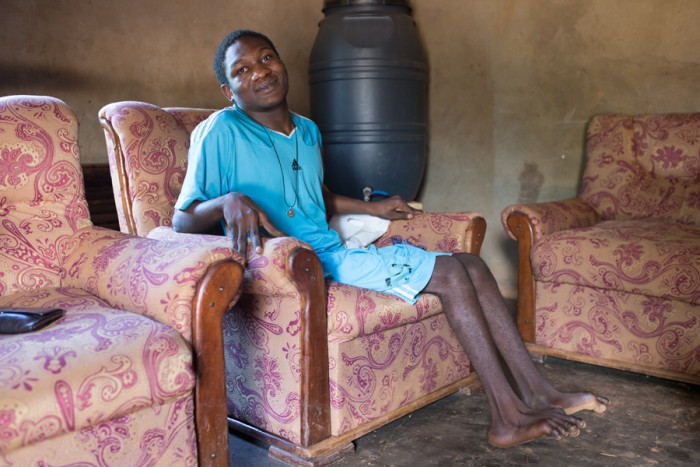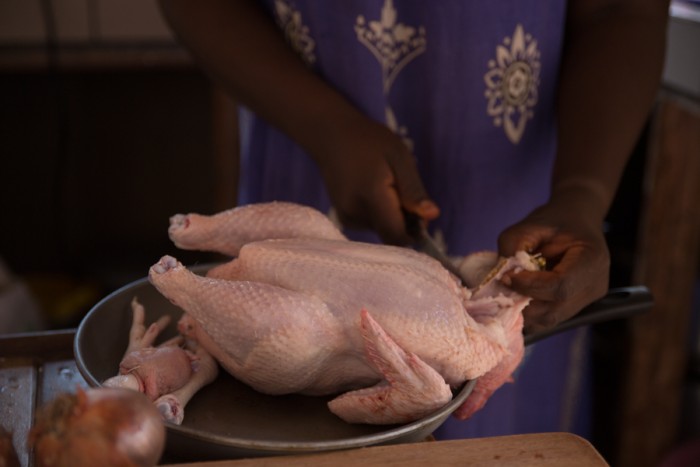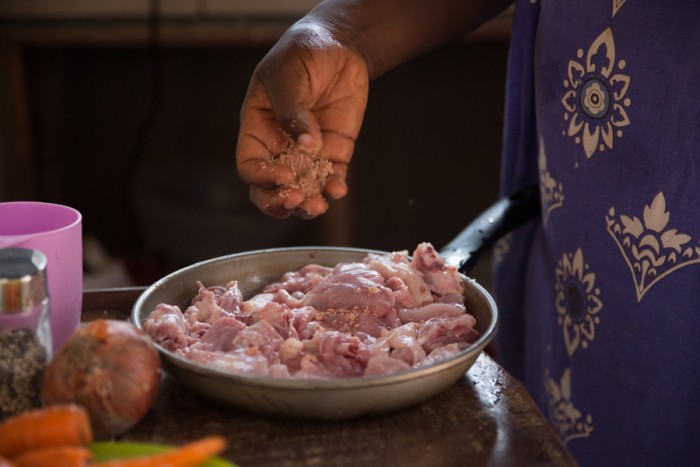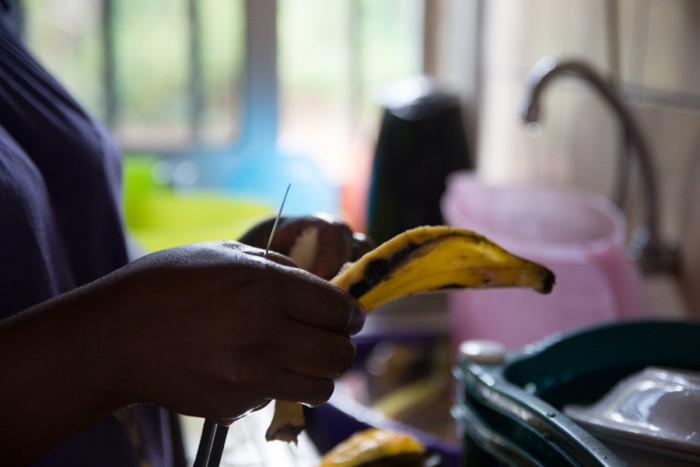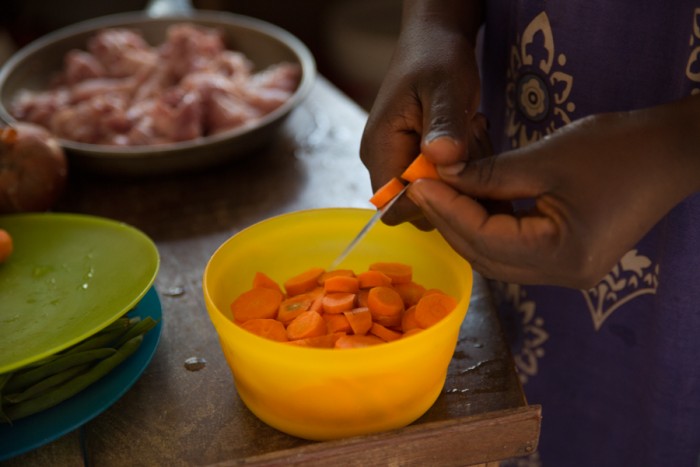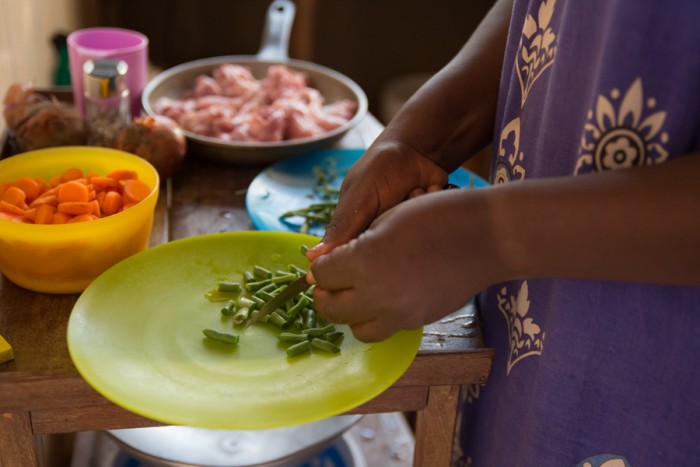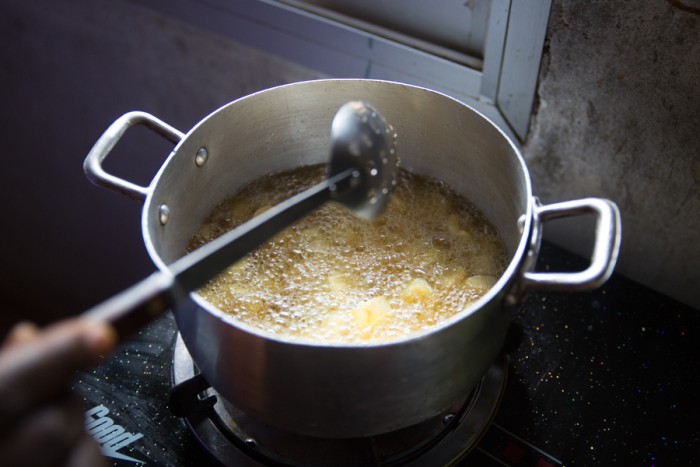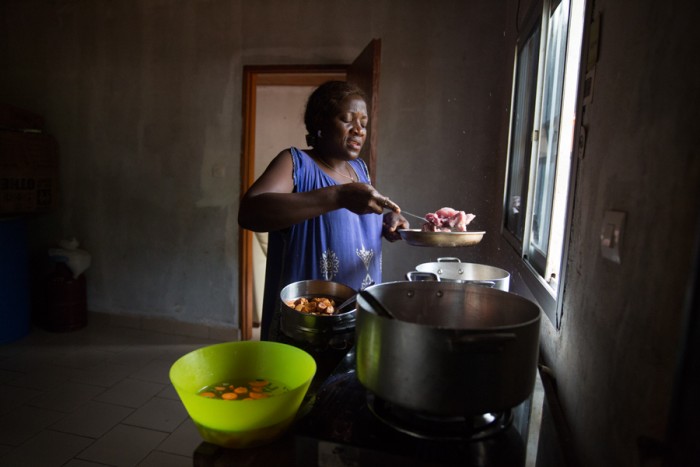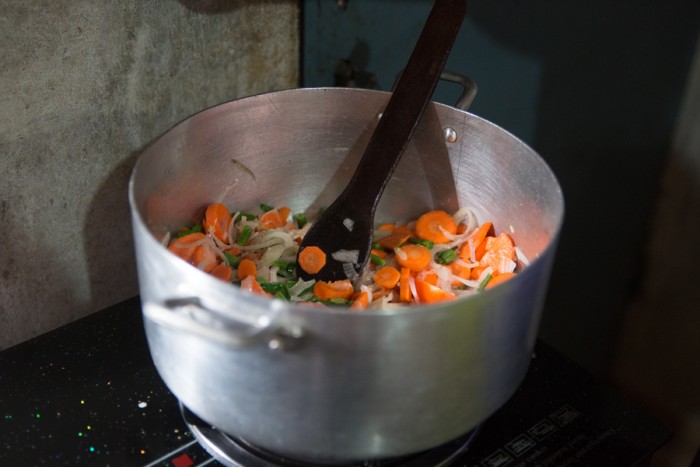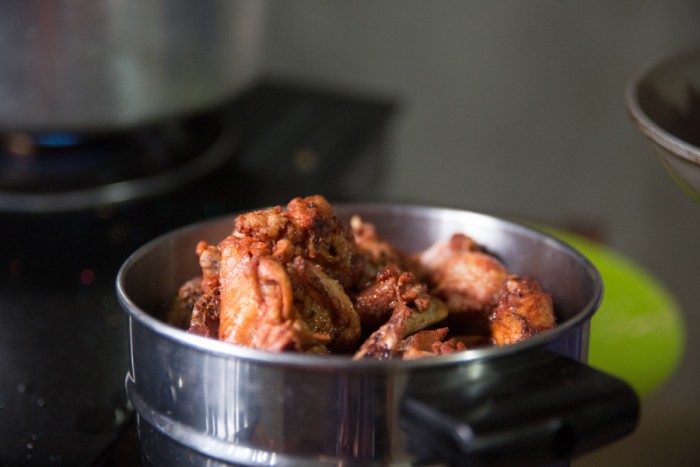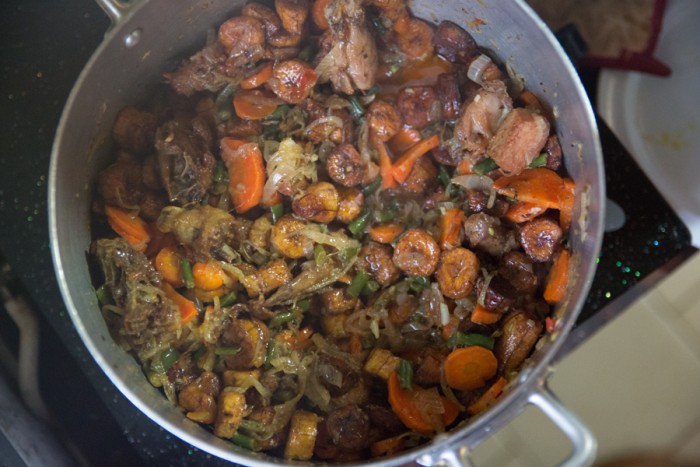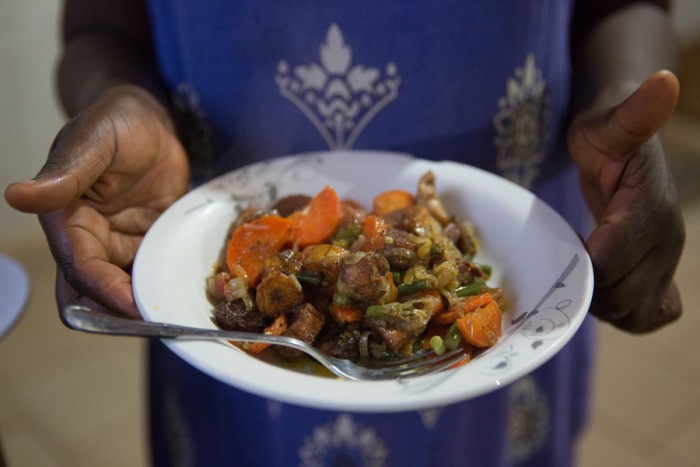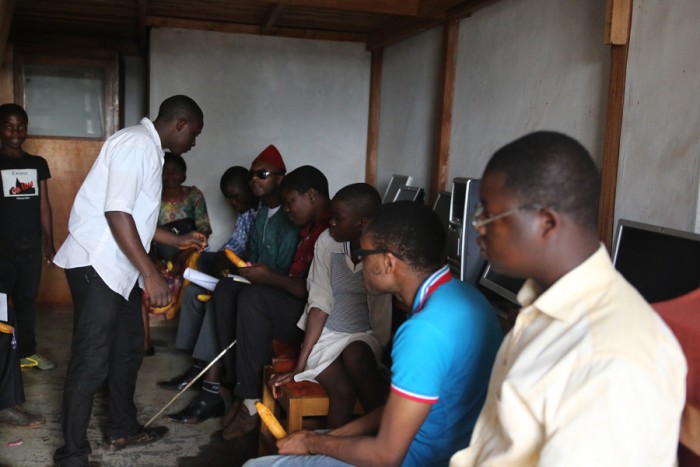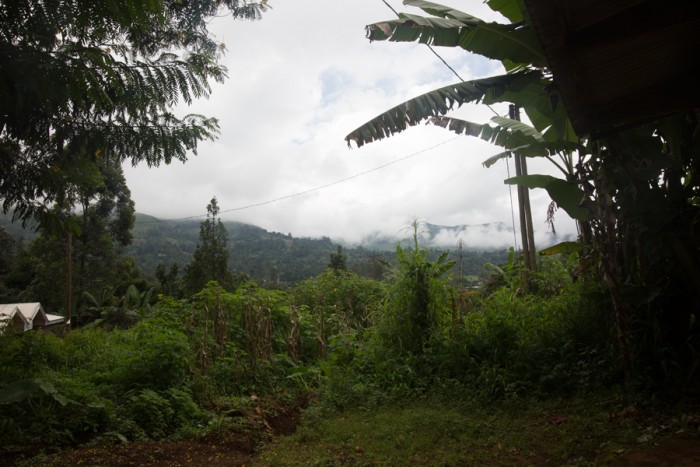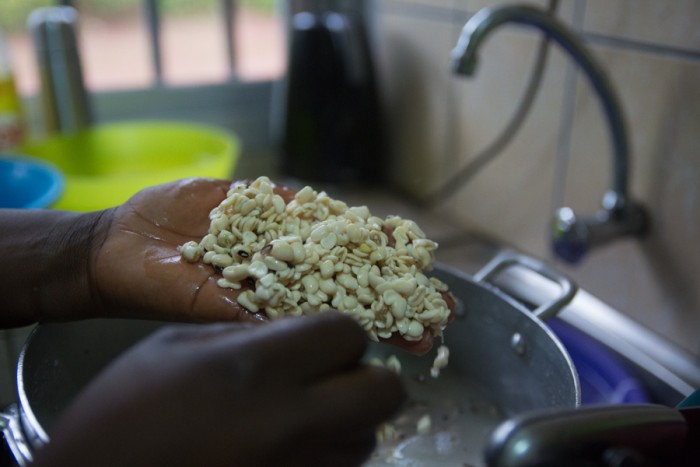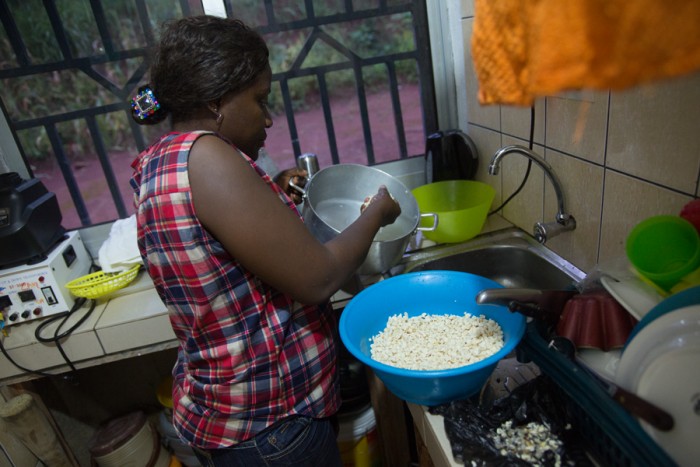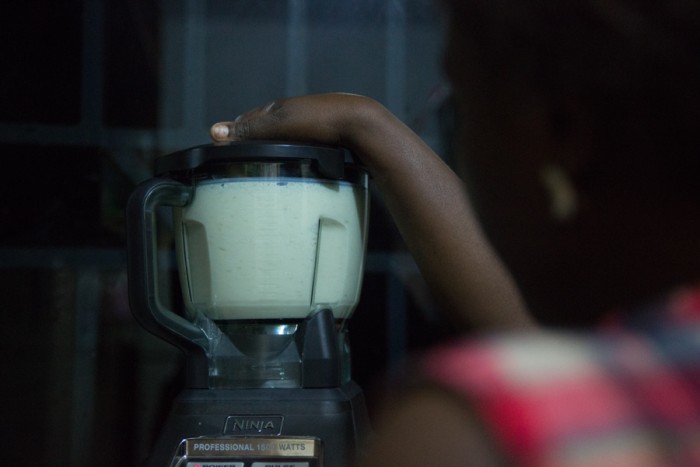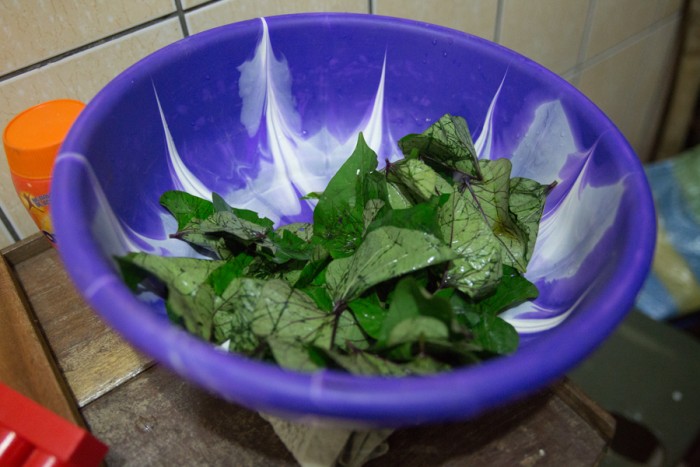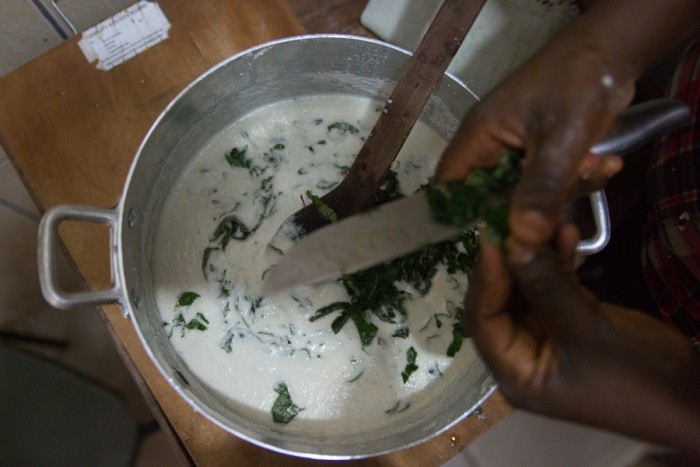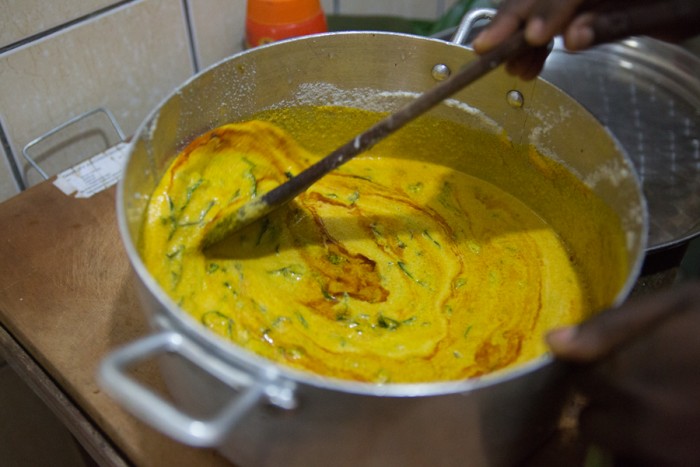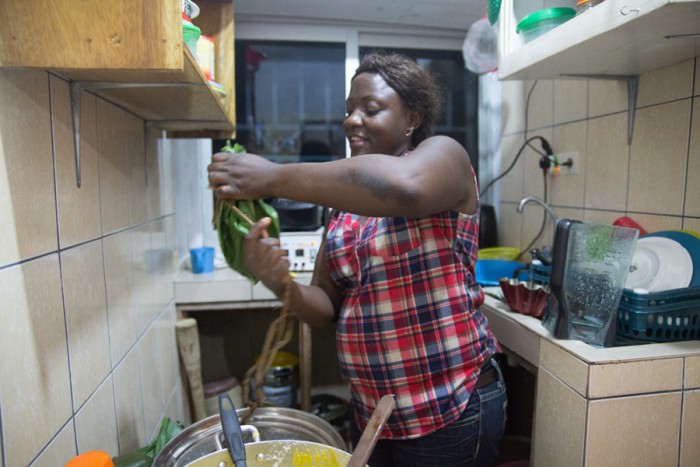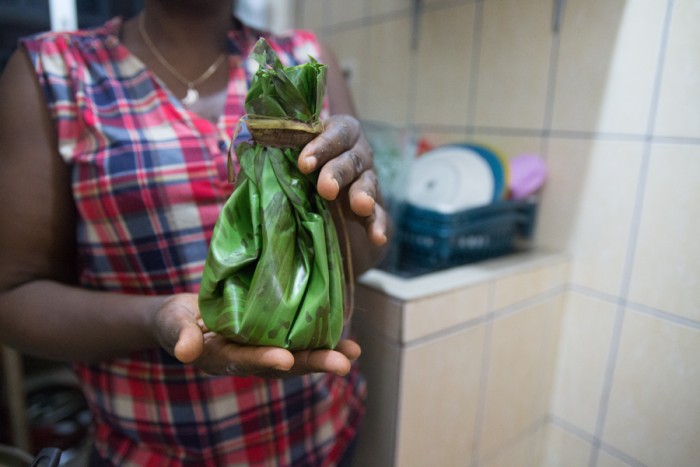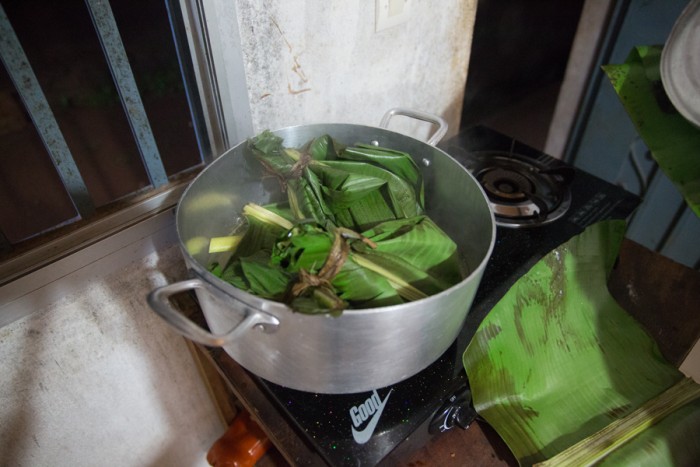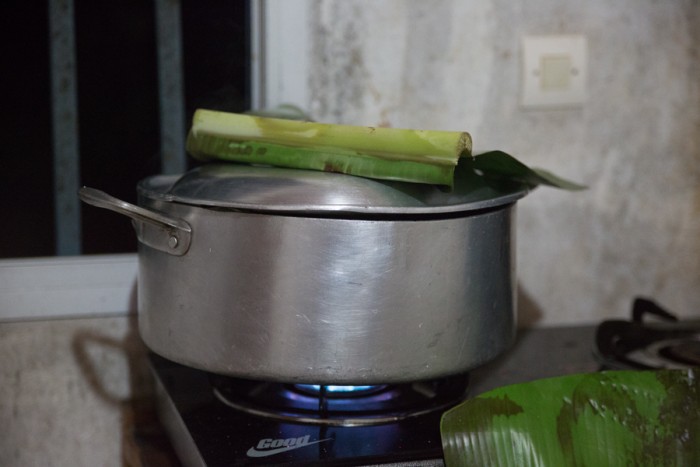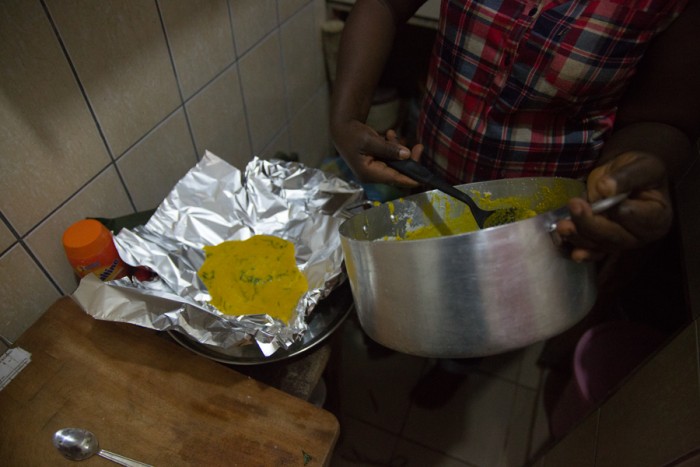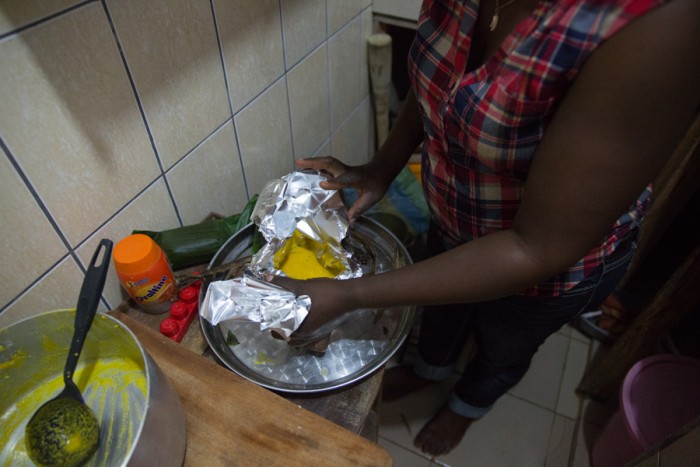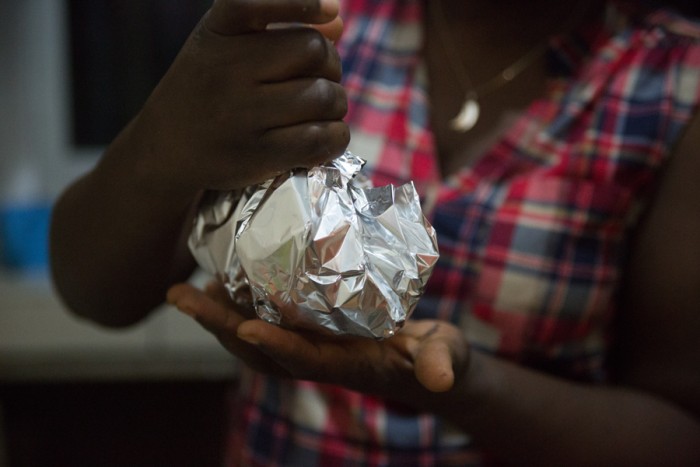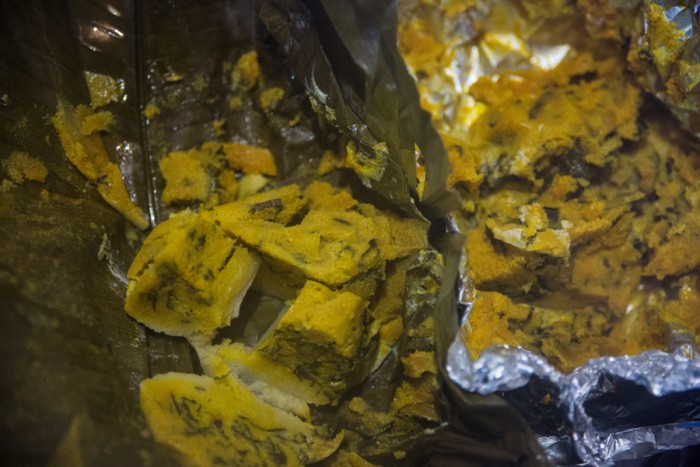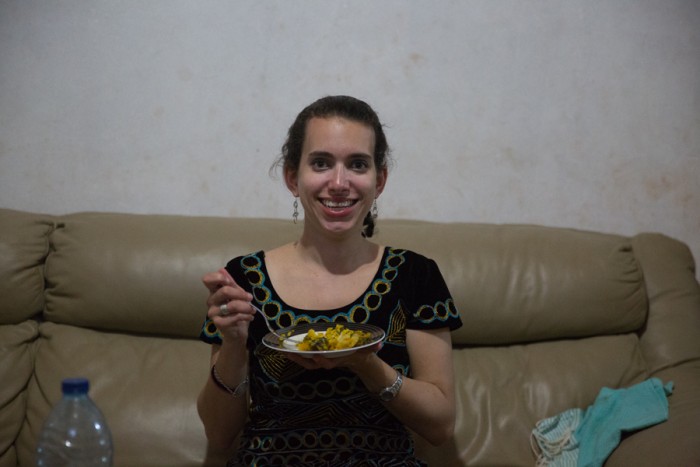September 3rd, 2016 by Rachel | Tags: Disability, Peace Corps, Persons with Disabilities of Cameroon, Photography | No Comments »
During the last seven months of my Peace Corps service, I am featuring photographs and stories of several persons with disabilities living in Cameroon. All the photos are part of a series called “Persons with Disabilities of Cameroon.” The goal of presenting photographs and their stories is to create better awareness about the plights that persons with disabilities face in a developing country. When I return to the US, I hope to exhibit this series in a gallery and publish a book to educate others about persons with disabilities living in developing countries as this topic is so rarely discussed in the media.
“I was born with some disability caused by nature,” said Innocence. Based on seeing Innocence’s body and how his grandmother described his body, it appears that he may have cerebral palsy.
“In my hands at the hospital, he was very healthy and so we had taken him home from the hospital. We came back to the house. When I went to wash the body, I feel the bone lines. I see the folds of the legs and arms. After four months, he could not sit fine,” said his grandmother, Francisca.
“He was like this,” the grandmother leaned her back to the right. She then demonstrated her legs going straight and outwards.
“So I came back to the hospital. And the doctor advised for him to excise his legs. So I came back to the house and I would do exercise. At 8 months, he was crippling with his stomach,” the grandmother leaned down on her back to demonstrate how her son was crippling with his stomach.
“I took him to SAJOCAH (St. Joseph Children and Adult Home). So he was not sick. I took him to SAJOCAH for exercises. I would take him at 10 o’clock every morning for exercise. I was paying money. So I last for two years. There were no changes. So I could not pay. I came back to the house, and I took him to the hospital for more exercise. I was paying money to the hospital for more exercise. So I would do the exercise in the house. I went to do operation in Njinikom. He was operated on the upper part of the legs. So we stayed in Njinikom for three weeks. And came back to the house. That was all. He was 12 years,” said his grandmother.
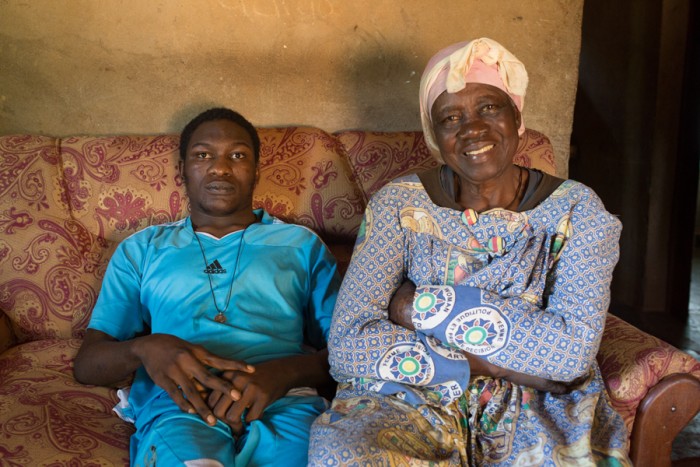
Innocence with his grandmother, Francisca
“Did the operation help?” I asked.
“No,” she said.
I asked Innocence, “Did you go to school?”
“No. I’ve never seen the four walls of a classroom,” he said.
“What did you do growing up?” I asked.
“Growing up, I did nothing. I lived around the concession,” he said.
“The catholic priest from Futru Parish near here came here and introduced me to a volunteer from Spain and gave me lessons. He taught me how to write letters and to read. Unfortunately he left and went back to Spain. Since then I have not received any lessons,” he added. The volunteer from Spain was with him for only one or two years. He was 15 years old when the volunteer visited him. He is now 22 years old. He currently has two volunteers who visit him to teach him how to read and write. They have been visiting him since this January 2016.
“What are your biggest difficulties,” I asked.
“As you can see, I can’t take a bath. Somebody has to wash me,” he said.
His grandmother chimed in and said, “He cannot walk. He needs someone to carry him. He has no wheelchair. He cannot do anything himself. I take care of him. I cannot carry him out. If he wants to go to toilet but I cannot carry him at all. I have a bucket in the house and bring it to him. I suffer a lot because of him. I cannot go to the market or go far because I have to take care of him. I work nothing because of him.”
She has a small farm by the house and gets food from around the house.
Innocence’s father died six months after he was born. His mother was a student when he was born and gave the baby to the grandmother.
September 2nd, 2016 by Rachel | Tags: Food, Peace Corps | No Comments »
Antonia invited me once again to her home to teach me how to make another Cameroonian traditional dish. Cameroon is often known as the breadbasket of west central Africa region. The country grows a wide variety of vegetables and raise variety of animals. In a good part of the country, it’s very easy to make a dish that is well balanced with all nutrients. Deijei, a traditional Cameroonian dish, is a perfect example of a well balanced dish and is so delicious and tasty. The dish is compromised of green beans, carrots, plantains, onions, tomatoes, chicken or any kind of meat, curry, rosemary, garlic, thyme, and maggie (dry shrimp or meat powder). Here is the recipe on how to make it. This recipe can serve at least five people.
Ingredients
- 1 cup chopped green beans
- 1 cup chopped carrots
- 1 cup chopped onions
- 1 cup chopped tomatoes
- 2 cups chopped plantains
- 1 full chicken (Any meat can be used)
- 1 teaspoon rosemary
- 1 teaspoon thyme
- 2 teaspoon chopped garlic
- 1 teaspoon curry
- 1 teaspoon maggie or any dry shrimp or meat powder
- 2 cups palm oil for plantains and chicken and 1 cup palm oil for vegetables
Instruction
- Chop the vegetables and put them in one bowl.
- Chop the plantains and put them in a separate bowl.
- Cut the chicken into small pieces and put them in a different bowl.
- Spread maggie or dry shrimp or meat powder onto the chicken.
- Put the chopped vegetables in a big pot with rosemary, curry, thyme, and garlic and stir fry them with 1 cup of palm oil on a low heat on the stove.
- Put the chopped plantains in a small pot with two cups of palm oil and let the plantains sit and fry on medium heat on the stove.
- While the plantains are frying, stir the chopped vegetables.
- Once the plantains have turned golden brown and been fried place them in a bowl and put the chopped chicken in the same pot of palm oil that was used to fry the plantains. Let the chicken sit and fry until it becomes golden brown.
- While the chicken is frying, stir the chopped vegetables.
- Once the chicken has become golden brown, transfer them and plantains to the large pot with the vegetables.
- Stir all the ingredients.
- Once all ingredients have been well mixed, serve!
September 2nd, 2016 by Rachel | Tags: Disability, Peace Corps, Sexual Reproductive Health, Women | No Comments »
I have never felt so passionate and emotional about women issues until coming Cameroon. When growing up, I was always aware of women issues as my grandmother often spoke in depth with me about it, but I have never felt so emotionally charged and angry to the point my blood has boiled. There has been numerous occasions when I have become so angry with men because of their point of view of women. Last Sunday, I experienced one of many examples of gender inequality issues. I presented Sexual Reproductive Health to a blind group. All nine participants except for one were men. The Sexual Reproductive Health workshop has three components, family planning, contraception options and sexual consent. During the sexual consent part, I had a fiery discussion about women rights and sex with them. I was amazed by men’s point of views, many who voiced that they are entitled and within their rights to be more powerful than women.
“The only time woman can say ‘no’ is when she is sick,” said one man.
“We’re very Christian and we believe that it’s impolite for women to say ‘no’ to sex,” said another man.
“When women kiss, it means that they’re saying “yes” to sex,” said another man.
“You have this perspective because you’re a woman,” said a different man.
When the man said my opinion is the way it is because I am a woman, I responded to him, “How would you feel if a woman pushed you to the ground and forced sex on you?”
There was a pause.
Then one of the man said, “With men, you can tell when we want to have sex by the erection of the penis. The problem with women is that we can’t tell if they want sex or not.”
I said to them, “When the woman is silent or says no, it’s a no.”
I was disappointed with the pre- and post-test results. This group generally did well on the pre- and post-tests at the malaria and HIV prevention workshops. They did poorly on the pre-test and made no gains on the post-test. What was interesting is that one of the questions was, “Men are responsible for helping women avoid pregnancy” and the participants have to circle “I agree” or “I disagree.” Three male circled “I disagree” on both the pre- and post-test. All the rest circled “I agree” on both pre- and post-test. This means that the the workshop did not help the three men better understand that they need to be women’s best partners and take on the role of helping women avoid pregnancy.
September 1st, 2016 by Rachel | Tags: Disability, Peace Corps | No Comments »
A couple weeks ago, one of my work partners, Regina, and I took an hour ride to a village called Belo, to teach a group of persons with disabilities about HIV Prevention and Sexual Reproductive Health. When we arrived there, we received a warm welcome from the president of the group, but the members of the group did not greet us with big open arms. They expressed dismay that we were not providing them food and also money to pay for their transportation to see the presentation even though the presentation was scheduled at the same time when they have a regular meeting, which meant that they would have already had to go to the meeting if the presentation was not happening. Regina eloquently explained to the group that she and I are both strictly volunteers who work without pay (*Disclaimer* Peace Corps does although provide compensation for all volunteers to cover living expenses) and that we’re paying with our own money for transportation to come to Belo.
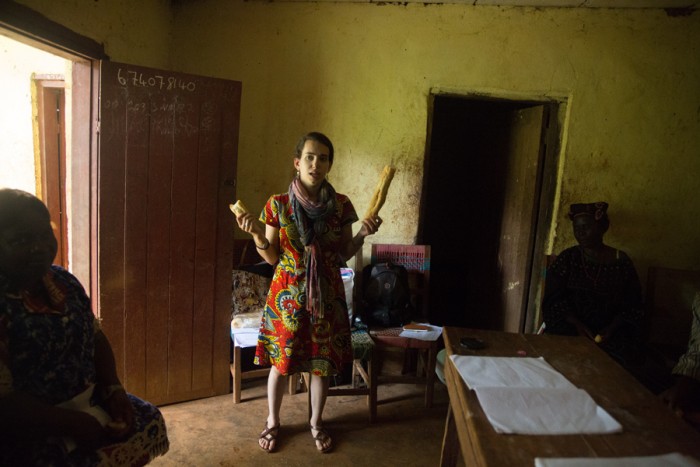
Throughout the HIV Prevention presentation, participants were talking and laughing and disrupting the presentation. The scene resembled a high school classroom filled with rowdy students. After the HIV Prevention presentation, many members said that they did not want the Sexual Reproductive Health presentation but the president did want the presentation. Regina articulated to the group that even if they think the information would not be beneficial to them, they should be sharing the information with the community who could greatly learn from them. While the president spoke with the group to try to change their mind, Regina and I both discussed and agreed that those who do not want to be part of the Sexual Reproductive Health presentation can leave and those who want it can stay. To call it off would have not been fair to those who wanted the presentation. The entire group then agreed to do the Sexual Reproductive Health presentation. They continued to be impolite. There were moments when I felt like I was a high school teacher as Regina and I paused when they were becoming loud or showing that they were clearly not paying attention. When I was doing the family planning demonstration using bread, they asked if they could eat the bread. I told them, “Yes, only if you will be quiet and listen.” At the end of the presentations, a man stood up and asked me, “What is your relationship status?”
While all 16 participants took the pre- and post-test for HIV Prevention, only 13 of them took the pre- and post-test for Sexual Reproductive Health. Three chose not to take the test because they said they were hungry. While those three were probably legitimately hungry because persons with disabilities do face financial barriers in being able to live comfortably, I provided them with bananas and some bread paid directly from my own personal funds. Most did well on the HIV Prevention pre-test as everyone scored 100% or missed one or two answers. While only four scored 100% on the pre-test, nine scored 100% on the post-test and so, this means the workshop was an opportunity for them to hone their knowledge on HIV prevention. On the Sexual Reproductive Health pre-test, no one scored 100%. Everyone scored below 90% and four scored below 60%. On the post-test, two scored 100% and one scored 97%. Everyone scored above 60% which means that a modest gain in knowledge has been demonstrated.
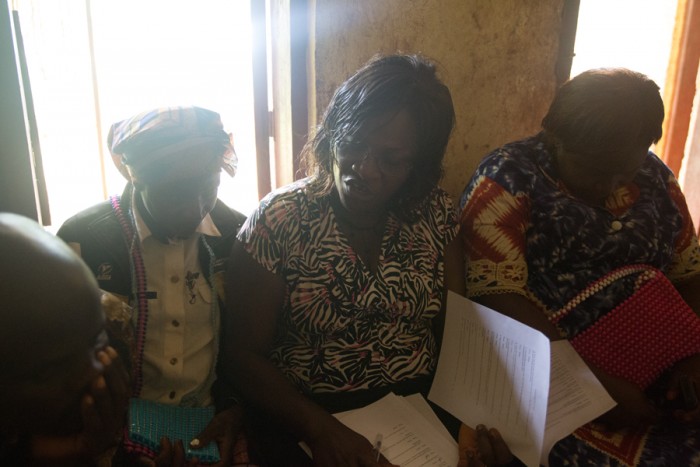
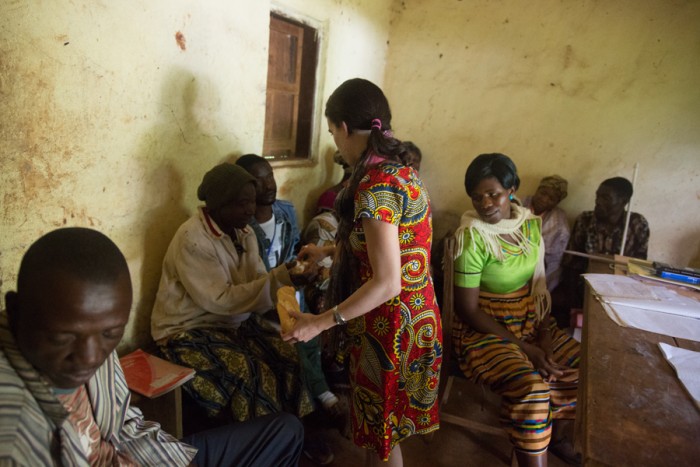
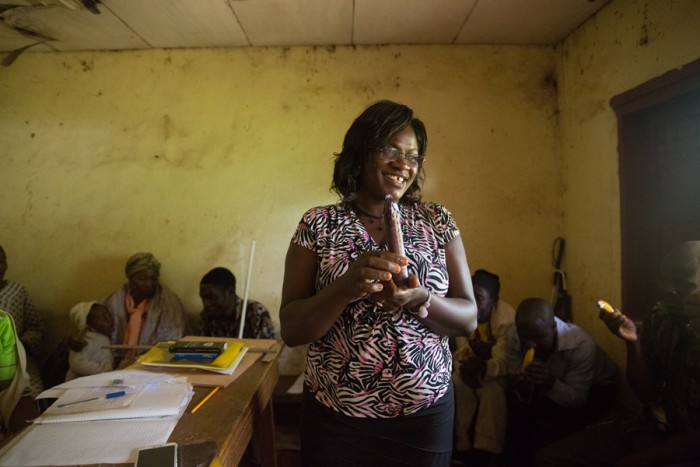
The situation I encountered at the workshop brings up the question of attitudes, money and international development. I have been largely blaming colonization and Europeans and Americans for creating a mentality of the locals who expect to be given money and things without work. While the foreigners had good intentions which was to help the poor, it set a bad precedent. It has a created a culture and mentality among the locals, which is that they have been led to believe that the foreigners, in particular white people, have money and they give free money and things for doing no work. As a result, some locals believe that they can receive free money and things and not do any work. This in turn leads to lack of motivation to do work. The foreigners had really created a culture where the locals saw it was better to give a fish and feed for only a day rather than teach how to fish and feed for the rest of the life.
Changes however have been happening in international development world. Some grants nowadays have policies stating that the locals must make a certain percentage of contribution in order to receive and use the grant. Peace Corps’ grant programs such as PEPFAR has this such policy. If a volunteer wants to acquire a PEPFAR grant, the community must contribute at minimum of 25% of the total cost of the project. This is a very good policy because it motivates the locals to do work and helps the locals feel empowered and important. It is also sustainable because the locals feel more motivated to keep up with the project and maintain it because they have put in their own money. They also learn new skills from the project as they participate in the work too and as a result, they can replicate the project on their own. I also believe that capacity building is even far more sustainable than even giving money and things in general. Training people new skills can truly help people become self-sufficient and provide them the needs for the rest of life.
August 28th, 2016 by Rachel | Tags: Food, Peace Corps | No Comments »
Koke is one of my most favorite Cameroonian dishes. It’s a dinner version of a flan or cake. It has soft and moist texture, and the taste melts in my mouth. It can also be very nutritious depending on which ingredients one uses. Koke originated from Meme and Indian division of Southwest region.
A Cameroonian friend and work partner, Antonia, was gracious to invite me to her home and teach me how to make a Koke. Here is the recipe on how to make it. One can change the ingredients to best fit the palette of a person and/or make it healthier. This recipe makes enough Koke for five people.
Ingredients
- 5 cups of black head beans (They can be found in Asian shops in the US. You can substitute them for chickpeas)
- 5 cups of water
- 1 1/2 cup of palm oil (you can substitute it for olive oil)
- 5 teaspoon of salt
- One cup of chopped onions or any vegetables (optional)
Instruction
- Preheat the oven at 350 F or 180 C.
- Wash the beans and take the black heads and skin off. If you use chickpeas and buy them in a can, you do not need to wash them and take the skin off.
- Put the beans and water in an electric blender and blend them.
- Add chopped vegetables if you have any to the blender and blend them.
- Add and mix in the palm oil or olive oil and salt.
- Pour one to two cups into a tin foil and close up the tin foil. You can also poor the mix into a pan.
- Cook for one hour in the oven or until it becomes firm and cake-y.

In Cameroon, one would normally use a leaf from a palm tree instead of tin foil to cook the koke. Antonia warms the leaf before putting the mix inside the leaf.
